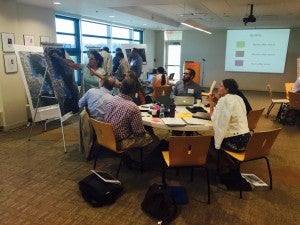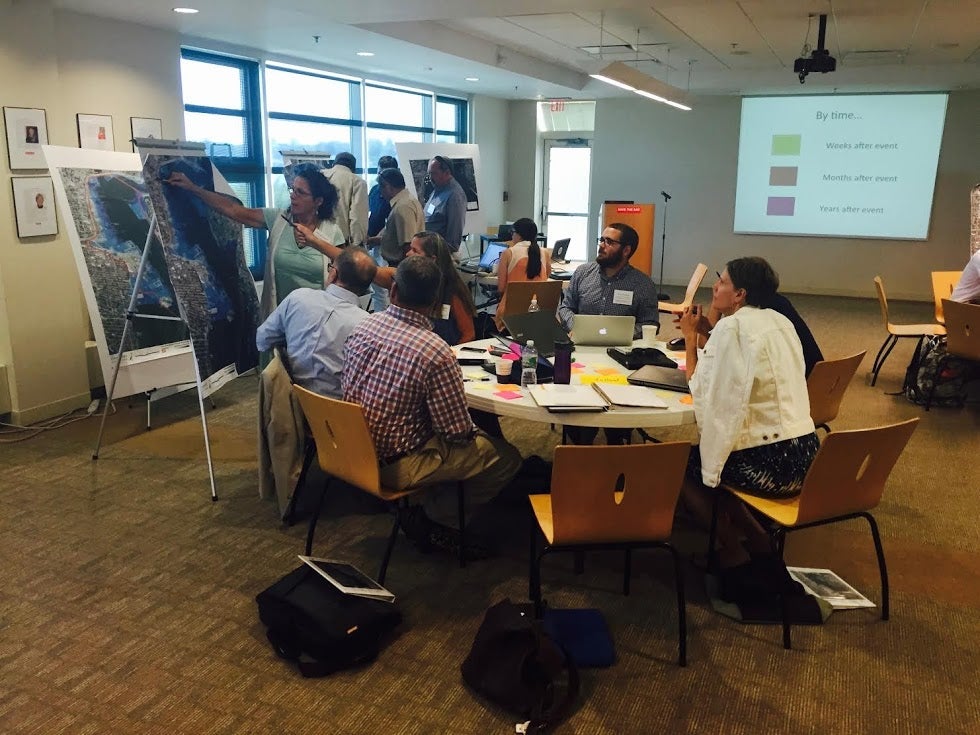Vulnerability Assessments
 Increased frequency of extreme ocean weather events requires investments in coastal resilience to reduce the costs of future climate-driven events. Storm risks and responsibilities for resilience investment distribute across a wide spectrum of public and private stakeholders. Hurricane Sandy resulted in hazardous spills, $170M of direct damages to the Port of NY/NJ alone and major supply chain disruptions that rippled across the country. Our research on vulnerability assessment creates science-based methods and tools that industry and government decision makers need to implement strategies for coastal-resilience investments.
Increased frequency of extreme ocean weather events requires investments in coastal resilience to reduce the costs of future climate-driven events. Storm risks and responsibilities for resilience investment distribute across a wide spectrum of public and private stakeholders. Hurricane Sandy resulted in hazardous spills, $170M of direct damages to the Port of NY/NJ alone and major supply chain disruptions that rippled across the country. Our research on vulnerability assessment creates science-based methods and tools that industry and government decision makers need to implement strategies for coastal-resilience investments.
Seaport systems have interdependent decision-making governance systems and make an ideal research area for developing data-driven tools that stakeholders need for long-term planning. This work has a tremendous broader and economic impact — ports play a critical role in the economy3 and facilitate 90% of world trade, supporting 13 million jobs in the U.S. alone. This work is extensible to other coastal sectors, because the geographical requirements of seaports are similar to other estuarine, environmentally sensitive, and exposed locations. While the emergency-response side of disaster planning receives substantial attention, preventative resilience investments, such as those recommended by our tools, would have greatly reduced costs to the private and public sectors. These tools require direct use of ocean science data, such as hydrodynamic surge models, to inform local decisions for resilience to coastal climate impacts, and my research thus lies at the nexus of ocean science, industry, and public-sector policy.
For an example of our workshops, see: http://www.portofprovidenceresilience.org/

